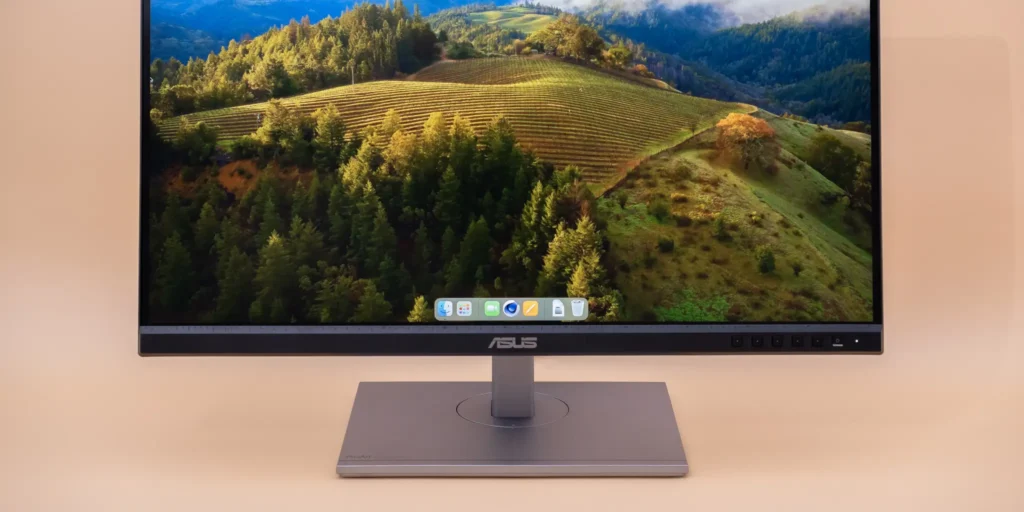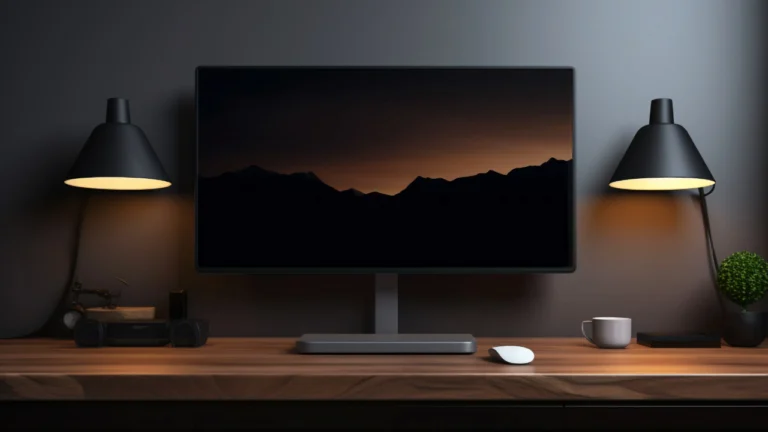What is the Width of a 27-Inch Monitor?

If you are in the market for a new monitor, whether for gaming, professional work, or general use, you may have come across the popular 27-inch size. One of the most common questions that arise when choosing a monitor is: What is the width of a 27-inch monitor? While the 27-inch specification refers to the diagonal measurement of the screen, the actual width of the monitor depends on several factors, including the aspect ratio and bezel size. In this article, we will explore the dimensions of a 27-inch monitor in detail, along with factors that affect its width and why it matters for your setup.
Understanding the Dimensions of a 27-Inch Monitor
Diagonal Measurement Explained
A 27-inch monitor means that the screen measures 27 inches diagonally from one corner to the opposite corner. However, this does not provide direct information about the width or height of the screen, as different monitors come in different aspect ratios.
Common Aspect Ratios for a 27-Inch Monitor
The aspect ratio is the proportion of the width to the height of the display. The most common aspect ratios for a 27-inch monitor are:
- 16:9 (Widescreen) – The most widely used aspect ratio for gaming, work, and general use.
- 21:9 (Ultrawide) – A wider screen, often used for multitasking or immersive gaming.
- 32:9 (Super Ultrawide) – An extremely wide screen used in professional and gaming setups.
Each aspect ratio affects the width of the monitor significantly, so let’s break it down further.
Width of a 27-Inch Monitor Based on Aspect Ratio
1. 16:9 Aspect Ratio (Most Common)
A standard 27-inch monitor with a 16:9 aspect ratio typically has a width of around 23.5 inches (59.7 cm) and a height of about 13.2 inches (33.6 cm).
2. 21:9 Aspect Ratio (Ultrawide)
If you opt for a 27-inch ultrawide monitor with a 21:9 aspect ratio, the width increases significantly. The typical width of a 27-inch ultrawide monitor is around 25.2 inches (64 cm), while the height is lower compared to a standard 16:9 display.
3. 32:9 Aspect Ratio (Super Ultrawide)
Super ultrawide monitors with a 32:9 aspect ratio are less common but provide an extensive screen real estate. A 27-inch super ultrawide monitor can be around 28 inches (71 cm) wide or even more, depending on the exact model.
Factors Affecting the Actual Width of a 27-Inch Monitor

While the screen width is dictated by the aspect ratio, the overall width of the monitor also depends on other factors:
1. Bezel Size
Most monitors have bezels surrounding the screen, which add to the overall width of the monitor. Bezels can be thin or thick, depending on the model. Some newer models have ultra-thin bezels, making them ideal for multi-monitor setups.
2. Stand and Frame Design
Some monitors come with additional frames or stands that extend beyond the width of the screen itself. If you’re measuring for a specific desk space, consider the total width including these external components.
3. Curved vs. Flat Screens
Curved monitors may have slightly different width perceptions due to their curvature. A curved 27-inch monitor still follows the same aspect ratio calculations, but the physical footprint might differ slightly.
Why Does the Width of a 27-Inch Monitor Matter?
Understanding the width of a 27-inch monitor is essential for several reasons:
1. Desk Space Considerations
If you are working with limited desk space, knowing the exact width helps in planning your setup efficiently. You may need to adjust your workspace or choose a monitor arm for better placement.
2. Multi-Monitor Setup Planning
For those who use dual or triple monitors, knowing the width ensures seamless alignment and proper screen real estate management. Thin bezels and exact width measurements help avoid gaps in a multi-monitor configuration.
3. Viewing Distance and Ergonomics
For optimal ergonomics, your viewing distance should be about arm’s length away from the monitor. A wider monitor may require more distance to avoid strain and provide a comfortable viewing experience.
4. Compatibility with Monitor Mounts
If you plan to use a monitor arm or wall mount, knowing the width ensures compatibility with the mount’s specifications. Some mounts have width and weight limits that need to be considered.
Choosing the Right 27-Inch Monitor for Your Needs
When selecting a 27-inch monitor, width is just one of many factors to consider. Here are some additional aspects to keep in mind:
- Resolution – 27-inch monitors come in different resolutions, such as 1080p (Full HD), 1440p (QHD), and 4K (UHD). Higher resolutions provide sharper images but require more powerful hardware.
- Refresh Rate – Gamers may prefer 144Hz or 240Hz refresh rates for smoother gameplay, while professionals may prioritize color accuracy.
- Panel Type – IPS panels offer better color accuracy and viewing angles, while TN panels have faster response times.
- Connectivity Options – Ensure the monitor has the necessary ports, such as HDMI, DisplayPort, and USB-C, for your setup.
Final Thoughts
So, what is the width of a 27-inch monitor? It largely depends on the aspect ratio:
- 16:9 (Standard Widescreen) – ~23.5 inches (59.7 cm)
- 21:9 (Ultrawide) – ~25.2 inches (64 cm)
- 32:9 (Super Ultrawide) – ~28 inches (71 cm)
The actual width may vary based on bezel size, frame design, and other factors. Knowing the precise dimensions of a monitor helps in setting up your workspace efficiently, ensuring compatibility with mounts, and making an informed purchase decision.
If you are looking for a 27-inch monitor, take all these factors into account to choose the perfect display for your needs. Whether you are a gamer, professional, or casual user, the right monitor size can make a huge difference in your overall experience.







